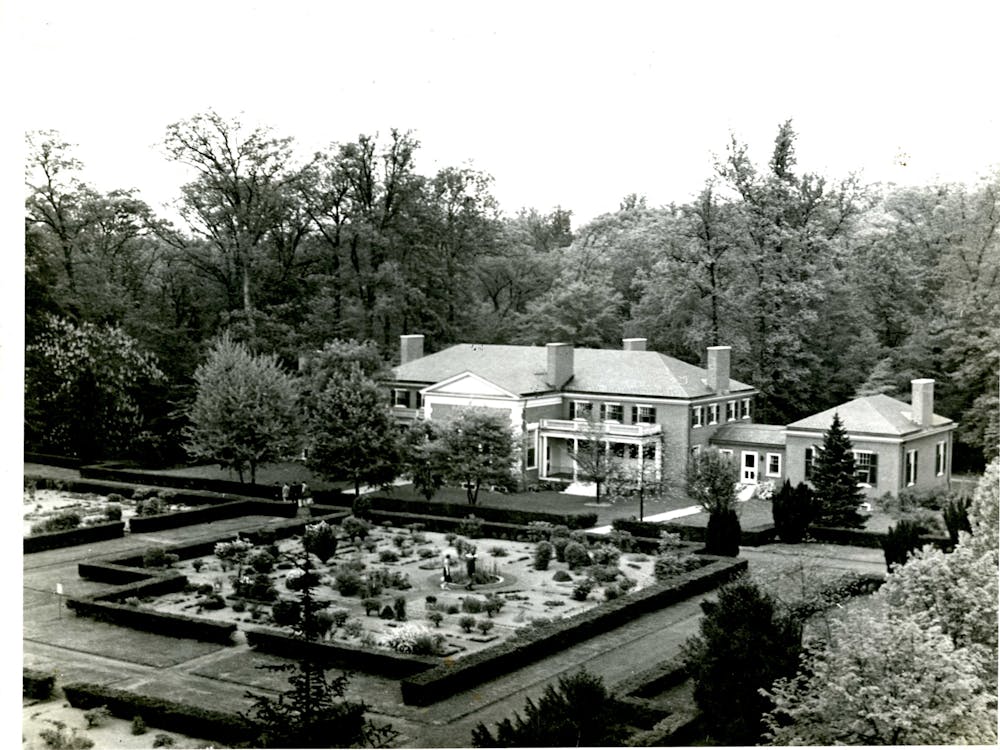The Carey Business School, the Center for a Livable Future and the Krieger School of Arts and Sciences presented “Feeding the 21st Century,” a panel this past Tuesday in Mudd Hall on the modern-day problems cities encounter.
Bloomberg Distinguished Professor Kathryn Edin facilitated the event, which was attended by several prominent panelists including David Dillon, the former CEO of the supermarket chain Kroger; Robert S. Lawrence, a professor and director at the Johns Hopkins Center for a Livable Future; Martin O’Malley, the former governor of Maryland and a visiting professor at the Carey Business School; and Adam Sheingate, an associate professor in the Department of Political Science.
“The purpose of the 21st Century City Initiative is to understand these complex challenges facing the city,” Edin said. “[The initiative helps] cities that have struggled to adapt to the demographic and economic changes in the seventies, but have really found ways to reinvent themselves... We want to capitalize on them, on the promise of these cities and build on their legacy of resilience.”
Edin explained that the solutions needed to be modern and innovative and involve every partition of society.
“We have food deserts and food swamps,” Edin said. “The market often isn’t enough... and when the market isn’t enough, that’s when policy can come in.”
Edin stressed the importance of interplay between the different sectors represented in the panel — business, public health, advocacy and policy-making — allowing for a multidimensional discussion on the issue.
Food swamps, areas with a large density of small corner stores and takeout restaurants, offer nutritionally poor food to their neighboring residents. Contrarily, food deserts are described by the U.S. Department of Agriculture (USDA) as “low income census tract[s] where a substantial number of residents have low access to a grocery store.” Often these two areas can overlap which creates a vicious cycle for the consumer.
Each panelist presented his specialty and angle on the issue. Lawrence spoke from a public health perspective.
“The 21st century city is experiencing three great collisions,” Lawrence explained. “The collision of globalization, urbanization and climate change. So that’s the context in which I think about these issues.”
According Lawrence, more than 50 percent of the world’s 7.3 billion people are living in urban environments. As cities progress, climate change will come to the forefront as the greatest challenge due to related issues with food, water and other resources. Lawrence used Baltimore as an example of this phenomenon by presenting city maps showing numerous food deserts and food swamps.
“We’re talking about the people in East Baltimore, West Baltimore, who have to rely on public transportation,” Lawrence said. “We have a remarkable phenomenon — people who live in food deserts and food swamps who are unable to access fresh fruits and vegetables, dairy, whole grains... but at the same time, they are surrounded by corner stores, fast food outlets in concentrations that greatly exceed that of middle class and upper class neighborhoods.”
Lawrence stated that people in East Baltimore and West Baltimore had twice the risk factor of cardiovascular disease and diabetes.
Dillon responded with his position as a supermarket operator. Kroger is currently the nation’s largest supermarket chain by revenue and fifth largest retailer in the world. Recently the company acquired Harris Teeter, a local supermarket chain.
“Grocers come at this differently [than public health specialists],” Dillon said. “There’s a food desert — how do we solve the food desert? It’s a social and community question well worth answering. Often that answer is in the inner city, the inner city that is impoverished and has problems in making ends meet.”
He argued that in order for a supermarket to operate, there needed to be a sufficient volume of customers attracted so that there will be continued revenue and investment return.
“There is an immediate conflict between the definition that [Lawrence] used and the way which we think an affordable supermarket can be built. We typically look at a trade area as a three-mile or bigger area,” Dillon said. “Any store we build automatically has most of its people outside of the quarter-mile range, and the only way you can get high concentrations of people close to the store is if you get a high-density population.”
However, Dillon said one of the problems with high-density populations is that the real estate, even in impoverished areas, is incredibly expensive and parking spaces are hard to come by.
“Volume requires a greater trade area and automatically you end up excluding some geographic areas because if there’s a supermarket already drawing that neighborhood two or three miles away, you don’t have a change in making a good investment,” Dillon said.
Sheingate took a political stance, reconciling the opposing sides of the discussion in a hopeful yet pragmatic manner.
“As a political scientist, I spend much time trying to explain why we don’t do the things that we should do to make the world a better place,” Sheingate said. “But there’s another element to the study of politics... and that’s the art of the possible.” He presented a summary of a more optimistic view of cities and the promise of urban and food policy of the 21st century identifying four trends not only in Baltimore, but in other cities: pragmatism, diversity, leadership and learning.
“The issue of food nutrition and access is a complex problem,” Sheingate said. “This knowledge has informed a wave of innovative policies; it has fostered a partnership with the City of Baltimore that began around Governor O’Malley’s tenure as mayor and that’s really blossomed with the Baltimore Food Policy Initiative.”
“Diversity fosters innovation,” Sheingate explained. “In particular, where you have diverse stakeholders, you’re likely to have organizations with overlapping memberships and individuals with multiple affiliations.”
O’Malley explained that the policies implemented have since improved Baltimore. In particular, the initiatives to bring back grocery stores, one of which included the Giant supermarket store near the Homewood Campus.
“We had lost 15 percent of our grocery stores from 1999-2000, so we made a very concerted effort,” he said. “While the first strategy of our economic development policy was to make our city safer again, the second... was to bring grocery stores back to city neighborhoods.”
“We saw it as a way to hold residents and attract residents again,” O’Malley said.
He explained further the importance of grocery stores in the urban environment.
“I saw the demoralizing effect that had on neighbors and their sense of place, and the value of their neighborhood, and their sense of community, when all of a sudden, the place — oftentimes, the only place — where they would always see their neighbors suddenly was shuttered and no more,” he said.
“Conversely, I saw the value in the optimism that returns to the neighborhood when people actually go to a grocery store near their neighborhood and get quality food. That, combined with my awareness of being mindful of the health of the entire child. It’s hard to really talk about social progress without being mindful of food and water — they’re kind of basic.”
According its website, the 21st Century Cities Initiative is “a dynamic, new, cross-disciplinary research initiative for urban study and change, focusing first on Baltimore but with the goal of sharing successes with other U.S. and foreign cities as well.” It strives to focus on promoting economic growth, improving city schools, public health and enriching arts culture.
It is part of a $4.5 billion campaign called Rising to the Challenge that allows Hopkins affiliates to expand their work to improve the world. Other campaigns include the Global Health Institute and the Water Institute.






















Please note All comments are eligible for publication in The News-Letter.